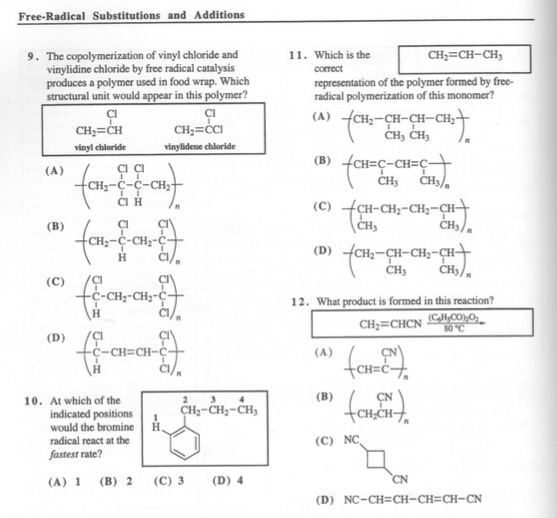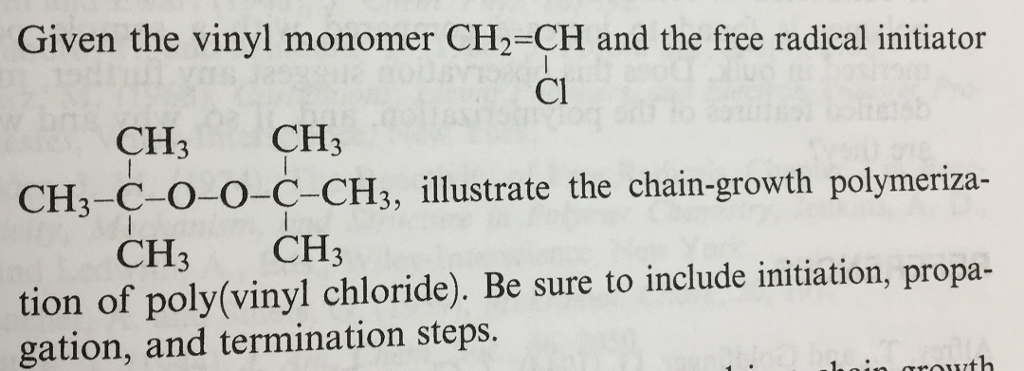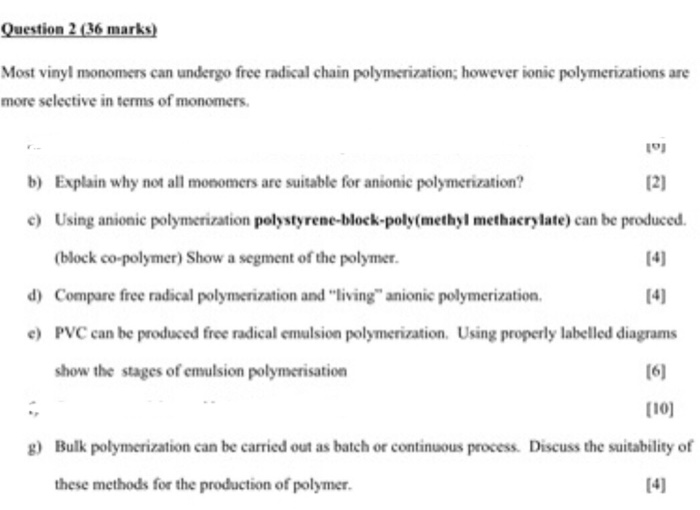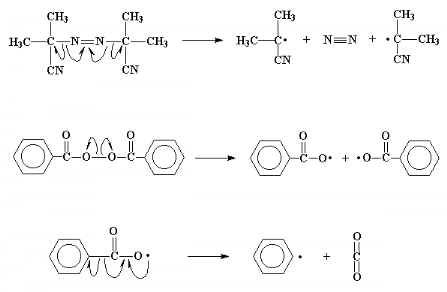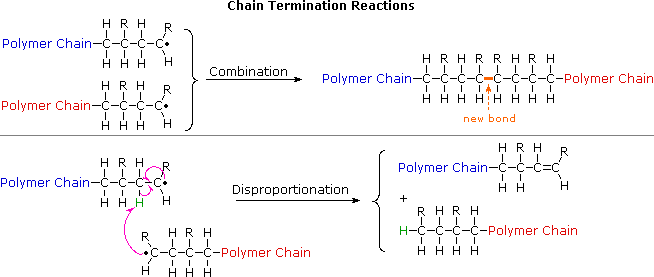The carbon carbon double bond in a vinyl monomer like ethylene has a pair of electrons which is very easily attacked by the free radical.
Wyh does free radicalization of vinyl monomers.
Free radical polymerization of vinyl monomers.
Vinyl acetate ch 2 cho 2 cch 3 is prepared from ethylene by reaction with oxygen and acetic acid over a palladium catalyst under the action of free radical initiators vinyl acetate monomers single unit molecules can be linked into long branched polymers large multiple unit molecules in which the structure of the vinyl acetate repeating units is.
Pvdf is a specialty plastic used in applications requiring the highest purity as well as resistance to solvents acids and hydrocarbons.
The surfactant molecules composed of a hydrophilic water attracting and hydrophobic water repelling end form a stabilizing emulsion before polymerization by coating the.
These radicals react with the in the water dissolved monomers and form soap type free radicals.
Polyvinylidene fluoride or polyvinylidene difluoride pvdf is a highly non reactive thermoplastic fluoropolymer produced by the polymerization of vinylidene difluoride.
The reaction ends when either all.
Chain transfer reactions can also be used to prevent free radical polymerizations.
Free radical polymerization frp is a method of polymerization by which a polymer forms by the successive addition of free radical building blocks.
Vinyl molecules have a double bond of the type ch 2 chx and ch 2 cxy where x and y represent a number of possible chemical moieties such as a hydrogen atom ethylene a methyl group propylene or.
The unpaired electron when it comes near the pair of electrons can t help but swipe one of them to pair with itself.
Following its generation the initiating free radical adds nonradical monomer units thereby growing the polymer chain.
Monomer molecules and free radical initiators are added to a water based emulsion bath along with soaplike materials known as surfactants or surface acting agents.
One type of compound added as a stabilizer to vinyl monomers is an alkylated phenol 10 which can transfer its phenolic hydrogen to form a new radical eq.
Free radical polymerization frp is one of the most important synthesis routes for obtaining vinyl polymers.
The relatively non specific nature of the free radicals towards vinyl and other unsaturated monomers makes frp one of the most versatile polymerization methods.
Free radical or addition polymerization involves a chain reaction with unsaturated monomers such as vinyl molecules forming long polymer chains.
